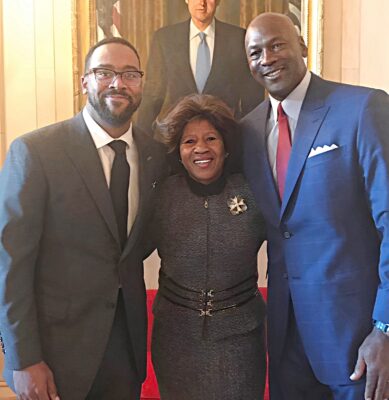Referring to the best preserved mummies in history, one cannot help but mention the body of María Eva Duarte de Perón – wife of Argentinian President Juan Perón. Her life has been “three sinks seven floats” with difficulties that cannot be described in words.
Leaving at a very young age, she was revered as a god by the people, dubbed “Legendary Woman”, “National Mother”, “Saint Evita”… Until her death, she still could not escape the fate of long and treacherous, wandering for many years before being truly rested.
Unhappy fate since childhood, growing up carrying the whole country
Eva Maria Duarte, also known as Evita, was born on May 7, 1919 in the small town of Los Toldos (Argentina). Since she was born crying, she was not fortunate like other children to have a loving family, Evita had to live the difficult childhood years.

The image of Mrs. Evita when she was young, she possessed the beauty of tilting the water that is rare for any woman to have.
Her biological father was married but still had a relationship with her mother and gave birth to 5 children. Evita is the youngest child. When she was 1 year old, he abandoned 6 mother and children to return to his official wife. Just suffering from poverty, not enough food to eat, emaciated and sick, Evita also had to bear scorn from friends that she was a “bastard”.
When Evita was 15 years old she met tango singer Agustin Magaldi when he came to her hometown to perform. Evita was like “drowning with a stake”, she quickly agreed to follow Magaldi to Buenos Aires to start her career in the limelight.
Evita’s life took a completely different direction from a concert to raise money for earthquake victims in January 1944 that killed more than 6,000 people. At that time, she met Colonel Juan Peron (48 years old), twice her age. He had no children, his first wife had died of cervical cancer 6 years earlier.

In 1945, Colonel Juan Peron became the Vice President of Argentina, but because of that popularity he had more enemies. Rumors spread that Evita used to work as a prostitute to make ends meet. The rumor spread has caused a huge wave in Argentina’s upper society. People whisper to each other that such a green girl can step into the upper class. And like other power couples, it’s also thought that it’s ambition, not love, that holds them together.
On October 9, 1945, Vice President Juan Peron was forced to resign and was arrested. Evita remained calm, she went around campaigning, calling for the support of the people. Her speech has touched countless poor people who are unemployed and filled with resentment. Mass demonstrations by trade unions broke out everywhere demanding the release of Mr. Juan. On October 17, unable to withstand the pressure of the crowd, the opponents had to release Mr. Juan.
Four days after Juan Peron was released, he and Evita were married. Soon after, he immediately planned to run for president.
On February 24, 1946, Juan won 52% of the vote and automatically became the new President of Argentina and Evita became the first lady at the age of 26.

When she became “the mother of the world”, Evita did not forget her great responsibilities. She always sought welfare for the poor, young children and the elderly, and demanded equal rights for women. She also founded the “first lady” budget association and the relief center for the needy. As First Lady, she worked and devoted herself to the people.
On January 9, 1949, the death sentence suddenly fell on that woman. The doctor diagnosed her with cervical cancer. At 8:25 pm on July 24, 1949, she took her last breath at the age of 33, leaving infinite grief for millions of people across Argentina.
Even if you die, you still can’t escape your fate
After Evita’s death, President Juan Peron was deeply saddened and decided to embalm her body as a way to let her stay with him forever.

The famous Argentinian surgeon Pedro Ara – who is known as the “artisan of mummies” – was assigned this responsibility. He quickly began embalming the noble First Lady.
Accordingly, all the blood in Evita’s body was replaced with pure alcohol and glycerine, a compound that can withstand temperatures up to 140 degrees Celsius. Alcohol draws water from tissues, glycerine helps the body look alive. like the real thing, and the whole internal organs are also preserved in unbelievable perfect condition.

After that, Ms. Evita’s body was placed in a coffin made of copper, thick crystal cover, priced at 30,000 USD (equivalent to nearly 700 million VND at the current exchange rate) and displayed for people to visit. visit.
For the next 2 years, Dr. Pedro Ara worked hard until his “lifelike work” was officially completed. But all plans for a monument to First Lady Evita failed when, in 1955, her husband President Juan Peron was overthrown by the military and he had to flee to Spain.
Fearing that Evita’s mummy would become a rallying point for the opposition, the soldiers seized and moved to a secret place.
The expert, Dr. John Kraniauskas, University of London, said: “Evita’s body represents power, a symbol of political power, and she also represents women. So her remains. It’s something people want to have. They kept it in a box hidden by the military in a secret place.”
Initially, the military command responsible for protecting Evita’s body refused to stay at its base. So the coffin was hidden in a wooden crate marked “radio equipment”, hidden in a truck parked in Buenos Aires, at the city’s waterworks, behind the cinema and above all. the attic of the military intelligence agency. But somehow, at every location, the news still leaked.

Evita’s body underwent retouching in 1974.
Dr Kraniauskas said: “She represents the welfare of the poor, so she is loved. She has a past as a model and actress and is a bit like Princess Diana.”
Around this time Evita’s coffin is said to have been kept in the home of an army major. Some rumors say the colonel shot his wife when she was jealous of the time he spent with Evita’s body.
In the end, it was assumed that nowhere in Argentina was a safe place to keep the body and the authorities ordered its transport to Europe. The coffin containing Evita’s body was transported to Bonn in West Germany and buried in the garden of the ambassador’s residence. Next, it was moved to Milan and buried in a cemetery under the false name Maria Maggi.
In 1971, her body was dug up and returned to her husband, who was with his third wife Isabel in Spain. During her years here, she was placed in an attic chapel. At this time, her mummy was no longer as beautiful as before.
After nearly 2 decades of “walking around” everywhere, she and her husband (now deceased) were able to return to their homeland. When Juan Peron’s third wife became President, she built a memorial to place the bodies of Evita and the late President Juan Peron side by side.
In 1976, a military coup broke out again. This time, Evita’s body was promptly hidden by the family before being stolen again by the military coup.
Finally, she also ends her adventure in a marble crypt, 5m underground and can withstand atomic bombs at La Recoleta cemetery (Buenos Aires).
From then on, no one ever saw this legendary Argentine woman again.











